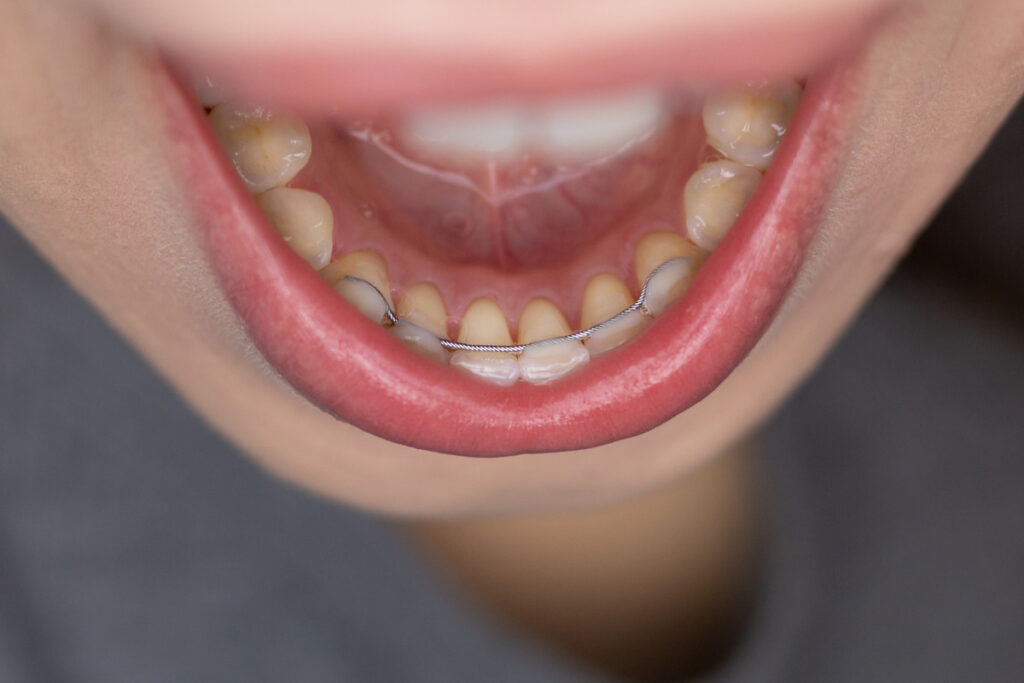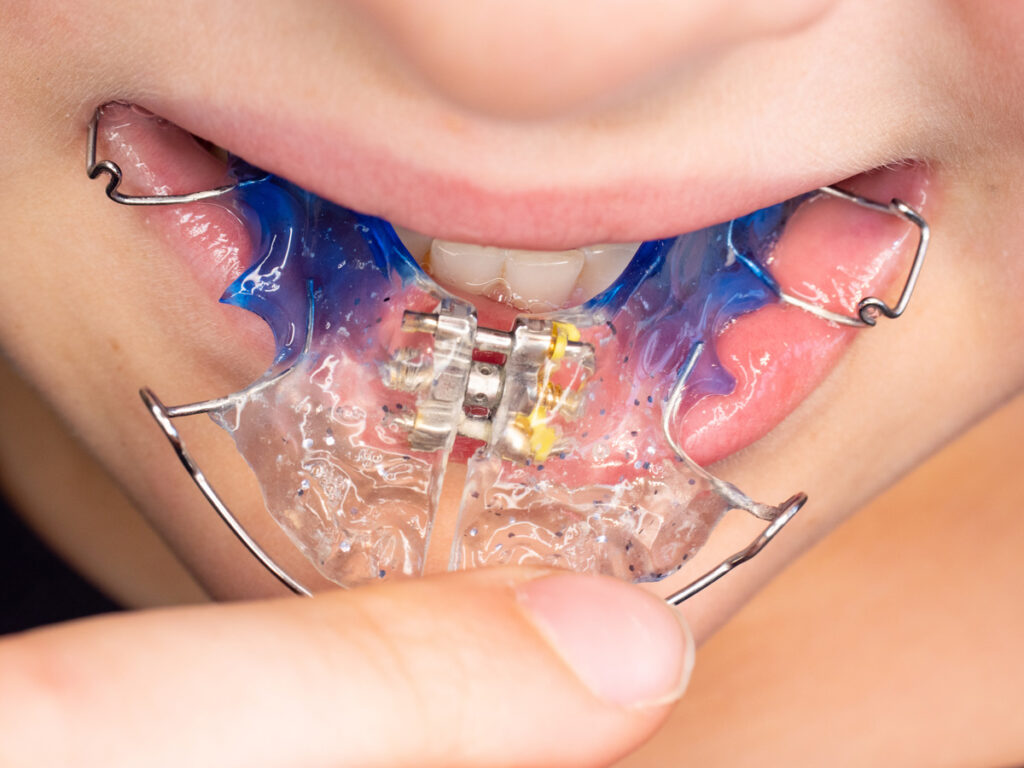When you’ve invested time and money into orthodontic treatment, the last thing you want is to see your progress undone. That’s why, if you find yourself with a lost or broken retainer, it’s important to act quickly. Retainers are essential for holding your teeth in their new, corrected positions after braces are removed.
Without a retainer, your teeth can begin to shift back to their original positions. Studies show that teeth can start to revert to their pre-treatment state within just a month—sometimes even within the first week. Acting fast can prevent the need for further orthodontic treatment and help keep your smile in check.
In this guide, we’ll explore the causes of broken retainers, what to do next, and how to prevent future damage. Let’s dive in and learn how to protect the investment you’ve made in your smile.
Table of Contents
How can you tell if your retainer is broken?
Recognizing when your retainer is broken is the first step to preventing further issues. Here are common signs that something might be wrong:
Cracks or Splits in the Plastic
Cracks or splits can weaken your retainer’s structure, making it less effective in keeping your teeth aligned.
Bent or Misaligned Wires
If the wires are bent or out of place, they can apply uneven pressure on your teeth, potentially affecting your orthodontic progress.
Missing or Detached Parts
A retainer with missing or detached parts can no longer function properly, putting your teeth at risk of shifting.
What causes retainers to break?
Retainers can break for various reasons, from improper handling to natural wear and tear. Understanding these causes can help you prevent future damage.
Improper Handling or Storage
Failing to store your retainer in its protective case can lead to accidental damage, such as dropping it on hard surfaces or leaving it where it can be stepped on.
Chewing on Hard Objects or Foods
Biting down on hard foods like ice or hard candy can crack or warp your retainer. Even chewing on pens or nails can lead to damage over time.
Natural Wear and Tear
Regular use of a retainer will eventually cause wear and tear. Over time, retainers may become loose or less effective at keeping teeth in position.
Exposure to Extreme Temperatures
Extreme heat can warp retainers, so it’s important to avoid leaving them in hot environments, such as a car or near a heater.
Pets
Pets, particularly dogs, are often attracted to the scent of saliva and may chew on retainers left out in the open.

| Cause of Damage | Description | Real-life Examples |
|---|---|---|
| Improper Handling or Storage | Not using a protective case can lead to accidental damage from falls or pressure. | Dropping the retainer on a hard surface, stepping on it, or leaving it in a place where it can be sat on. |
| Chewing on Hard Objects or Foods | Chewing on hard objects or consuming hard foods can cause cracks or warping in the retainer. | Biting down on ice, hard candies, or using the retainer to open packaging. |
| Natural Wear and Tear Over Time | Regular use of a retainer can lead to natural wear and tear, gradually weakening its structure. | The retainer becoming loose or less effective after years of nightly use. |
| Exposure to Extreme Temperatures | Leaving the retainer in environments with high or low temperatures can alter its shape. | Leaving the retainer in a hot car, near a heat source, or in a freezer. |
| Pets | Pets, especially dogs, are attracted to the scent of saliva and may chew on retainers. | A dog finding the retainer on a nightstand or table and chewing it. |
What to Do If Your Retainer Breaks
If you notice your retainer is broken, it’s crucial to act quickly to avoid complications. Here’s what you should do:
1. Assess the Damage
Gently examine your retainer to determine the extent of the damage. Avoid applying any force that could make it worse. If possible, take clear photos of the damage from different angles to show your orthodontist.
2. Don’t Try to Fix It Yourself
Resist the urge to attempt DIY repairs. While it may be tempting, trying to fix the retainer on your own could make the damage worse and lead to the need for a full replacement.
3. Contact Your Orthodontist
Reach out to your orthodontist immediately for professional advice. Be ready to describe the damage, share any photos, and explain how the issue occurred. This helps your orthodontist determine the best course of action—whether you need to come in right away or wait until your next appointment.
How can broken retainers be fixed?
The solution to a broken retainer depends on the extent of the damage. Minor issues, such as small bends in the wires, can often be fixed in-office by your orthodontist. However, if there’s a crack in the plastic or the damage is more severe, professional repairs may be needed, or a full replacement might be required.
Here’s a breakdown of possible solutions:
| Type of Damage | Solution | Turnaround Time | Temporary Solution Available? |
|---|---|---|---|
| Minor Adjustments (Small Bends) | Orthodontist can adjust in office | Immediate to 1 day | Not typically needed |
| Significant Damage (Cracks) | Professional repairs | 1-2 weeks | Yes, temporary retainer may be provided |
| Beyond Repair or Lost | Complete replacement | 1-4 weeks | Yes, temporary retainer may be provided |
How to Prevent Your Retainer from Breaking
Taking good care of your retainer can prevent many common problems. Follow these tips to ensure it stays in good condition:
1. Follow Proper Care and Cleaning Instructions
Make sure to clean your retainer as instructed by your orthodontist, using a soft-bristled toothbrush and lukewarm water. Avoid using hot water, as this can warp the retainer.
2. Store It in a Protective Case
Always store your retainer in its protective case when not in use. This simple habit can prevent accidental damage like drops or pressure from other objects.
3. Avoid Extreme Temperatures
Don’t leave your retainer in environments with extreme heat, such as hot cars. Excessive heat can alter its shape, making it less effective.
4. Keep It Away from Pets
Make sure to store your retainer out of reach of pets, especially dogs. Consider keeping the case in a drawer or other safe place to avoid any mishaps.
Practical Tips for Retainer Care and Storage
To enhance the section with specifics on preventing retainer breakage, a detailed table with practical tips and hacks for remembering to store the retainer properly is provided below:
| Preventive Measure | Specific Action/Tips |
|---|---|
| Proper Cleaning | Use a soft-bristled toothbrush and lukewarm water. Avoid hot water as it can warp the retainer. |
| Daily Inspection | Check for any signs of wear or damage daily. Small cracks can quickly turn into big problems. |
| Protective Case Usage | Always store your retainer in its protective case when not in use. Consider attaching a brightly colored keychain or sticker to make the case more noticeable. |
| Heat Exposure | Never leave your retainer in a hot car or near a heat source. Store it in a cool, dry place. |
| Avoid Chewing Hard Foods | Do not chew gum or eat hard foods while wearing your retainer. Remove it during meals. |
| Reminder Systems | Set reminders on your phone or place sticky notes in areas where you commonly remove your retainer, like the bathroom mirror or beside your bed, to remind you to put it back in its case. |
| Multiple Storage Locations | Have a dedicated retainer case in key locations, such as next to your bed and in your bathroom, to reduce the risk of misplacement. |
| Regular Check-ups | Visit your orthodontist regularly for retainer check-ups to ensure it’s in good condition and fits correctly. |
Consequences of Not Fixing a Broken Retainer
Failing to fix a broken retainer can have serious consequences for your orthodontic treatment. Here’s what could happen:
- Teeth May Shift: Without a functional retainer, your teeth can begin to move back to their original positions, undoing the progress made through braces.
- Extended Treatment Time: A delay in fixing your retainer can lead to a prolonged treatment period, requiring additional orthodontic work to correct any shifting.
- Increased Costs: Not addressing a broken retainer may result in higher costs, as additional treatments or new retainers may be needed to maintain your smile.
Reddit Threads
Here are some useful Reddit a threads that cover the topic of broken retainers:
- Wearing a broken retainer leading to TMJ: This thread discusses the effects of wearing a broken retainer and how it may contribute to jaw issues like TMJ. Users share their experiences and seek advice on whether to continue wearing a damaged retainer until a replacement is available.
- What to do when your retainer breaks: In this thread, users talk about their experiences with broken retainers, including the best course of action when it happens and how quickly you should visit your orthodontist.
Conclusion
Your retainer is a crucial part of maintaining the progress you’ve made with orthodontic treatment. If it breaks, acting quickly can prevent setbacks and keep your smile on track. By following proper care instructions and addressing any issues immediately, you can ensure your retainer lasts longer and continues to protect your smile. Don’t hesitate to contact your orthodontist for advice if your retainer gets damaged—early intervention is key!
At Hulse Orthodontics, we’re committed to helping you maintain your perfect smile. If your retainer is broken or damaged, don’t wait—contact us today for expert advice and fast solutions to keep your teeth in alignment. Our team is here to provide the support you need, whether it’s a quick repair or a new retainer. Call us now to schedule an appointment or learn more about our retainer services

Dr. Cameron Hulse grew up in Southern Orange County, California. While in his own orthodontic treatment in high school, Dr. Hulse realized how much his new smile changed him and decided he wanted to improve other’s teeth and smiles. Dr. Hulse pursued his dream and completed a BS in Zoology at Brigham Young University. Then he was selected to attend the University of Southern California’s prestigious School of Dentistry where he received his D.D.S.. After Dental School, he switched coasts and completed his orthodontic residency at Jacksonville University where he received his CAGS.



